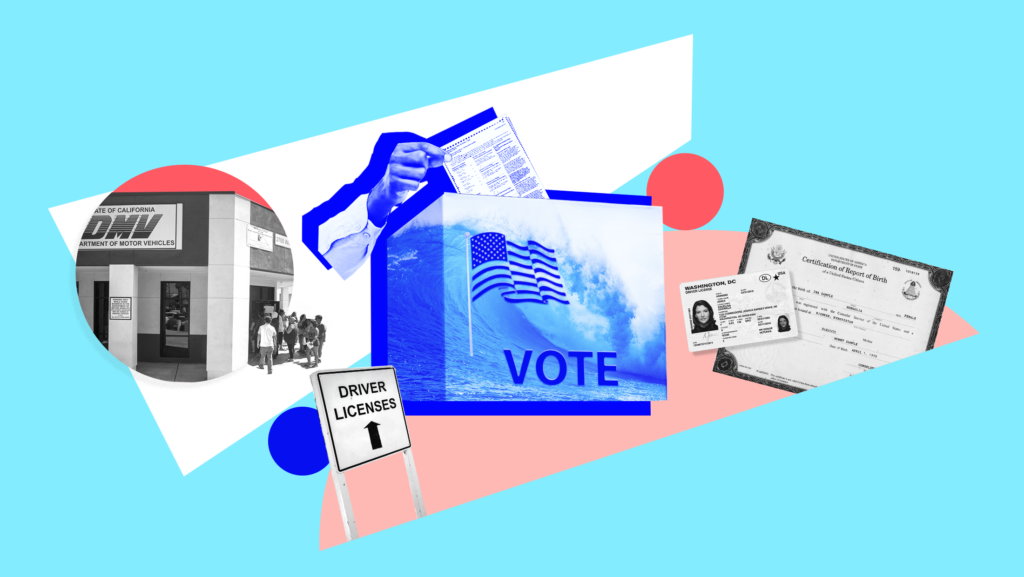We Win by Seeing the Person Behind the Vote

When we met Rose*, she was 79 years old and had never voted. She also needed an ID. When people like Rose need IDs, it’s never just for voting. They need IDs to access social services like food stamps, to apply for housing and jobs, to open bank accounts or all of the above (plus more). That was the case with Rose, who needed access to services but also really wanted to vote for the first time.
Our team worked to get her a birth certificate, proof of residency and a ride to the DMV, where we then paid for her ID and helped her register to vote. A few months later, we picked her up, walked through our voter guide and drove her to the polls. At 79, Rose was now a voter.
At our organization, Spread The Vote + Project ID, we work 365 days a year to help people get the ID they need to live and then, during elections, we get them to the polls. Without proper identification, people can’t work, apply for an apartment, get food from many food banks, sleep in beds in many shelters, sign up for Medicaid or Medicare and a long long list of other life necessities. Over 26 million American adults — 11% of the population — do not have government-issued photo IDs, and without them, they’re trapped. There is no way to escape poverty or homelessness without an ID, yet it is really hard to get one, which is why our mission is to work every day to get people the IDs they need to live.
After helping people obtain necessary IDs, we also help get them to the polls when an election comes around. Voter turnout in this country is directly proportional to socioeconomic status: The unemployed, unhoused and most vulnerable among us are the least likely to vote, and yet the ones whom the effects of government decisions usually hit first and hardest. Whether or not a state requires an ID to vote, those who don’t have one still face a multitude of challenges, making it much less likely that they will then go out and vote. So we work all year to build trust and relationships and when it’s time to vote, we show up with voter guides, rides to the polls and whatever else voters may need, helping make their voices heard at the ballot box.
If we want people to vote in a country that makes it almost impossible to do so, we have to be willing to look beyond the ballot and see people for who they are and what they really need.
That’s how we took those we work with from 0% voter turnout to 40% over the last six years.
As we did this work, we realized that there was another population that was perhaps less likely to vote than even the unhoused: incarcerated citizens. Most people don’t realize that there are over 746,000 Americans who are currently incarcerated and eligible to vote. Most are being held pretrial because they can’t afford to post bail, but they haven’t been convicted of a crime. There are also those who have been convicted of misdemeanors, but haven’t lost their right to vote. And yet, outside of Maine and Vermont, most states don’t make it easy to vote from jail. That’s why STV + PID started Vote by Mail in Jail (VBMIJ).
VBMIJ is the only national program that helps incarcerated individuals vote. In 2022, our program worked with 33 jails in eight states and helped 1,900 people register to vote and over 1,300 actually vote from jail. From Michigan to New York, we spent last year training facility employees, mailing packs of information, creating special voter guides for incarcerated individuals, hosting webinars for family and community members and providing everything that voters need to cast their ballots from jail.
There is perhaps no place more difficult to feel that your voice is being heard than from inside a jail cell. Incarcerated people are counted in the census for the region where they are incarcerated. This means money, services and representation are funneled to these regions based on these counts, but the people being counted don’t receive the benefits of these resources. Our efforts to ensure that all incarcerated individuals who can vote are able to do so is an effort to make sure that they are more than just bodies from which prison towns can profit.
All of our efforts to support folks living in the margins without a government-issued ID center on themes of long-term commitment, relationships and community. It is not possible to parachute into a community in October and expect them to vote for you in November. Real, significant turnout requires serious relationship building day in and day out. It requires a willingness to serve the community’s needs before asking them to serve yours. It requires time, and a lot of it. If we want people to vote in a country that makes it almost impossible to do so, we have to be willing to look beyond the ballot and see people for who they are and what they really need.
*Name changed for privacy
Kat Calvin is the founder of Spread The Vote + Project ID.
This piece is part of Democracy Docket’s How We Won series, which features op-eds from candidates and organizations that answer the question: How did you win in the 2022 midterm elections and what does this victory mean for democracy?